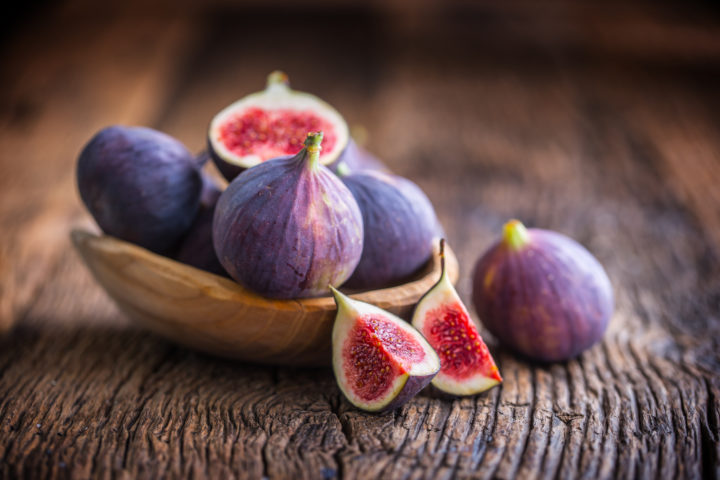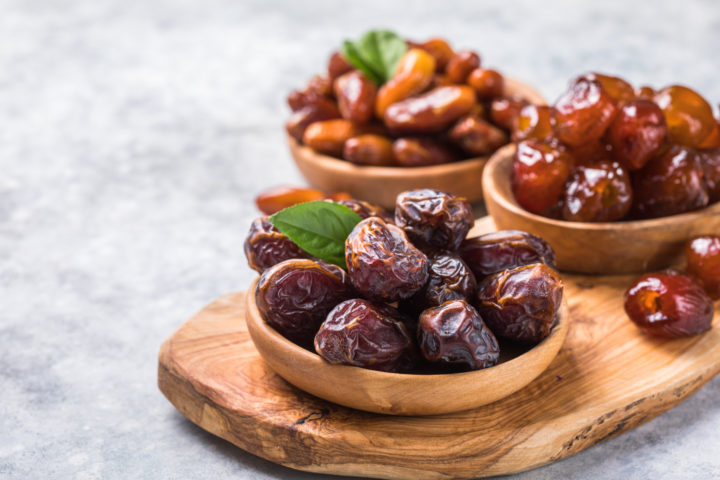
Figs and dates are popular fruits and while they have some similarities, they are obviously different items. Yet, they are often compared for their taste and nutrition effects. So, how does a figs vs dates comparison shape up?
Both these fruits share several similarities. They’re small and sweet fruits that are rich in nutrition. They’re often enjoyed dried and as snacks.
Let’s take a closer look and get a better understanding of the figs and dates comparison.
Figs vs Dates: Differences And Similarities
A Quick Introduction With Figs And Dates
Figs are an ancient and nutritious fruit, native to West Asia and the Mediterranean. The fruit can be enjoyed fresh or dried, and is nutritious either way. There are several varieties of figs and therefore, the fruit is available in several colors.
Figs have a rather unique fertilization process, where only a specific type of fig wasp can fertilize a specific variety of fig plant! The wasp and fig have a mutual relationship and have been evolving together for millions of years.
Dates come from the date palm tree. This famous fruit has several uses and varieties. While the fruit itself is very sweet and nutritious, it’s also possible to produce sugar from the sap of this tree. Date palm sugar is an excellent sweetener, especially if you want something with the same sweetness, but without the quick and sharply sweet taste of granular sugar.
It can be enjoyed when fresh or as a dried sweet treat. Dates originated in the Middle East and have since spread around the world.
So if we were to consider the difference between dates and figs, the answer would be that they’re entirely different fruits. They look different, they grow on separate trees, and have different properties. Heck, even their trees look nothing alike!

What Is A Fig?
Figs are a famous and ancient fruit. Technically, figs are a group of tiny inverted flowers that grow inside a pod. This is a big part of the reason why pollination of a fig is possible only through specific varieties of the fig wasp.
The fruit, or rather, the pod has hundreds of flowers, each of which produces a seed. The seeds, or the fruit of this flower are crunchy. These are known as achenes, which are very similar to the crunchy bits/seeds on a strawberry. The fleshy and soft part of the fig that we enjoy the most, is technically only an accessory fruit.
Scientific classifications and technicalities aside, this is a delicious fruit with an excellent mix of crunchy and soft texture.
What’s A Date Fruit?
The date fruit is the fruit of the date palm tree. These trees are tall and have their fruit growing in bunches, often as high as 50 feet off the ground. Each date fruit contains a large, cylindrical pit, which is not edible. The fruit can be enjoyed raw and is very sweet.
Dates are also dehydrated. Though the dehydration is only partial. When dehydrated, the flesh of the fruit turns hard and develops wrinkles that are somewhat similar to those on a raisin. Dates are full of sweetness and they pack quite a bit of sugar.
You can enjoy them raw, with a somewhat soft texture. Once they’re partially dehydrated, the texture hardens, though many people prefer the dehydrated version to the fresh dates.
These fruits pack more than just sweetness. They’re rich in a variety of nutrients and vitamins. Yet, considering that the sugar content can be as high as 66.5% (66.5 g of sugar for every 100 g of dates), remember to go easy on them. Delicious as they are, they’re only to be enjoyed in moderation.
Which Is Healthier: Figs Or Dates?
Dates and figs are both rich in nutrition and taste. Figs are a rich source of Vitamin A, potassium, calcium, magnesium, and phosphorus. They contain some fiber as well, though not in significant amounts. On average, figs offer about 16 grams of sugar for every 100 grams of fruit.
Dates too are rich in nutrition. They offer a significant amount of several nutrients, including Vitamin A, iron, phosphorus, calcium, magnesium, potassium, copper, and amino acids. Dates are rich in fiber. The fiber content increases with dried dates.
The proverbial fly in the ointment here is the sugar content. Dates offer about 65 grams of sugar for every 100 grams of the fruit. This is why you should exercise caution and moderation when enjoying dates.
FAQ
Are Figs Good For You?
Figs are a fruit that humans have enjoyed since pretty much forever. They’re a rich source of nutrients, including Vitamin A, potassium, calcium, and phosphorus. Figs, being nutritious and delicious fruits, are good for you.
How To Eat A Fig?
Fig is a fruit you can enjoy raw. Wash the fruit in clean water and take a bite! Or if you prefer, use a knife to cut into slices that you can enjoy.
There will be tiny seeds in the fig. It’s usually not possible or convenient to remove them, so enjoy this fruit with its seeds and skin intact. However, do make it a point to remove the stem.
Dried or dehydrated figs are available as well and can be enjoyed in pretty much the same way as fresh figs. When you feel like it, take a bite!
Figs are an excellent companion and ingredient for several recipes and cooking styles. They’ve made their impact in several cuisines and go well whether you choose them for cooking, baking, broiling, and grilling.
What Do Figs Taste Like?
The flavor of figs is best defined as sweet and honeyed. Fresh figs are fairly juicy and have an enjoyable texture. The interior of the fruit is largely soft and squishy, with hundreds of small, crunchy seeds.
When dried or dehydrated, figs take on a more chewy texture, though the crunchiness of the seeds stays intact.
Conclusion
There is a very clear and distinct line that separates figs vs dates. Both of these fruits differ in their taste, texture, and appearance. Even the trees that they grow on are remarkably different. However, both these fruits are enjoyable, delicious, and nutritious.
